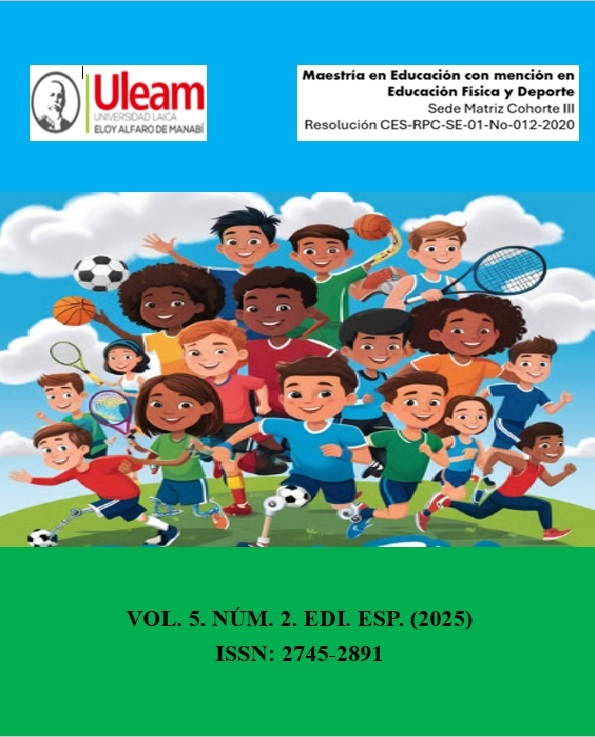Assertive Communication to Improve Motivation Levels in High School Physical Education Classes
Abstract
This study analyzes the perception of assertive communication and motivation in the educational context, considering the influence of teachers, students, parents, and schools. Motivation gaps and the impact of the teaching environment on these gaps are examined. Initially, various theories on assertive communication and motivation are addressed, followed by an analysis of their causes. The main objective is to diagnose the factors that cause demotivation in physical education classes and how assertive communication can contribute to improving these classes. The main objective was to diagnose the factors that cause demotivation in physical education classes and analyze how assertive communication can contribute to improving student participation. A study was conducted with a sample of 70 high school students between the ages of 15 and 17. The results of the regression analysis revealed that teaching strategy and assertive communication significantly influence motivation. Likewise, it was shown that motivation is a key factor in maintaining regular physical activity practice, and that the perception of the usefulness of the subject varies between institutions. It has been shown to significantly increase students' motivation and interest in improving their health and social well-being. Assertive communication and the use of student-centered pedagogical strategies are key to improving motivation levels in high school physical education classes, thus promoting more active and positive participation in physical activity.
Downloads
References
Baena-Extremera, A., M. Gómez-López y A. Granero-Gallegos. «Motivational climate, autonomy support and satisfaction with physical education in secondary students. » International Journal of Environmental Research and Public Health 19.3 (2022): 1421.
Caballo, V. E. Manual de técnicas de terapia y modificación de conducta. . Pirámide, 2020.
Cañadas, M., López, R. y B. Delgado. «Influencia de la motivación en el rendimiento y bienestar de estudiantes en educación física.» Revista Española de Pedagogía 78.275 (2020): 59 - 76 .
Cárcamo, L., A. Soto y C. Sánchez. «Motivación hacia la actividad física en adolescentes: Un análisis desde el enfoque cualitativo.» Revista Iberoamericana de Psicología del Ejercicio y el Deporte 16.2 (2021): 102 - 113.
Creswell, J. W. y J. D. Creswell. Research design: Qualitative, quantitative, and mixed methods approaches. SAGE, 2021.
Deci, E. L. y R. M. Ryan. Self-determination theory: Basic psychological needs in motivation, development, and wellness. Guilford Press., 2017.
Franco, E. y A. López. «Clima motivacional, comunicación del profesor y compromiso en educación física: Un estudio con estudiantes adolescentes.» Retos 42 (2021): 768 - 775.
González-Cutre, D., M. Romero-Elías y Á. Sicilia. «El papel de los comportamientos docentes de apoyo en la promoción de la motivación del alumnado adolescente en Educación Física.» Journal of Teaching in Physical Education 39.4 (2020): 574 - 582.
González-Valero, G., y otros. «Comunicación asertiva como promotora del clima motivacional en la educación física.» Revista Retos: Nuevas Tendencias en Educación Física, Deporte y Recreación 42 (2021): 544 - 552.
León-del-Barco, B., y otros. «La competencia social y la comunicación asertiva como factores protectores en adolescentes.» Educación XXI 23.1 (2020): 45 - 68.
Llorente, Carlos. «Comunicación interpersonal y clima escolar: El papel del profesorado en la construcción del bienestar del alumnado.» Revista de Educación 383 (2019): 121 - 144.
Méndez-Giménez, A., J. Fernández-Río y J. A. Cecchini. «Comunicación, apoyo a la autonomía y motivación en Educación Física: un análisis longitudinal.» Physical Education and Sport Pedagogy 26.1 (2021): 45 - 59.
Moreno, J. A. y P. Hellín. «Motivación en la educación física escolar: Un análisis desde la teoría de la autodeterminación.» Cuadernos de Psicología del Deporte 14.3 (2014): 19 - 26. < https://revistas.um.es/cpd/article/view/219501>.
Moreno-Murcia, J. A. y L. M. Ruiz. «Relación entre la motivación, las emociones y el rendimiento académico en educación física.» Anales de Psicología 34.2 (2018): 337 - 344.
Rodríguez-Bravo, A. E., M. Rodríguez-Pérez y E. Iglesias-Martínez. «Docencia en tiempos difíciles: comunicación, liderazgo y bienestar docente.» Revista Electrónica Interuniversitaria de Formación del Profesorado 26.2 (2023): 43 - 60.
Valenzuela, Jorge, y otros. «Motivación y comunicación docente: Aportes para una educación emocionalmente significativa.» Revista Iberoamericana de Psicología 13.1 (2020): 45 - 60.
Valverde-Esteve, T., J. Devis-Devis y C. Peiró-Velert. «Desmotivación y abandono de la práctica física en adolescentes.» Revista Internacional de Ciencias del Deporte 17.63 (2021): 1 - 15.
Vergara-Morales, J. y R. González-Pérez. «Motivación académica y compromiso escolar: Validación de instrumentos en población juvenil.» Estudios Pedagógicos 47.3 (2021): 189 - 208.Zamarripa, J., D. González-Cutre y J. F. López-Gil. «Clima motivacional y su influencia en la actividad física en estudiantes de secundaria.» Cuadernos de Psicología del Deporte 19.1 (2019): 122 - 131.
Copyright (c) 2025 Mildred Moreira Risco ,Miguel Cartaya

This work is licensed under a Creative Commons Attribution-NonCommercial-NoDerivatives 4.0 International License.






